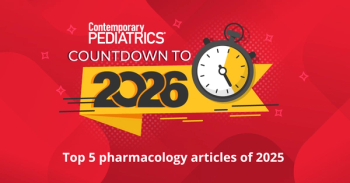Key takeaways:
- Once-weekly somapacitan matched or outperformed daily somatropin in growth outcomes for children with SGA, NS, or ISS in the phase 3 REAL8 trial.
- Somapacitan showed superior height velocity in SGA and NS patients and was non-inferior in ISS, supporting reduced injection burden.
- Novo Nordisk has submitted somapacitan for regulatory review in the US and EU for these pediatric indications.
Novo Nordisk's once-weekly somapacitan (Sogroya) demonstrated positive safety and efficacy results in the phase 3 REAL8 (NCT05330325) basket study among pre-pubertal children born small for gestational age (SGA), with Noonan syndrome (NS), or with idiopathic short stature (ISS). Data were announced on May 12, 2025, and presented via 3 late-breaking abstracts at the first Joint Congress of the European Society for Paediatric Endocrinology (ESPE) and European Society of Endocrinology (ESE) in Copenhagen, Denmark.1
According to a press release from Novo Nordisk, results from the trial demonstrated that somapacitan was non-inferior and had similar clinical outcomes and safety profile to once-daily somatropin (Norditropin; Novo Nordisk) in improving yearly growth rates, measured by height velocity (HV) after 52 weeks.
Once-weekly somapacitan vs once-daily somatropin
The REAL8 trial is part of the ongoing REAL clinical trial program and is a randomized, open-label, active-controlled, parallel-group, phase 3 evaluation of somapacitan for safety and efficacy. Pre-pubertal children with Turner syndrome (TS), NS, or ISS were randomized to receive either a once-weekly somapacitan dose of 0.24 mg/kg/week or a once-daily somatropin dose of 0.050 mg/kg/day. Children born SGA were randomized to receive either somapacitan 0.24 mg/kg/week, or low dose of somatropin 0.035 mg/kg/day, or high dose of somatropin 0.067 mg/kg/day.
Among children born SGA, somapacitan had a superior estimated mean HV compared to a lower, 0.035 mg/kg/day, dose of somatropin (11.0 vs 9.4 cm/year). Somapacitan demonstrated non-inferior estimated mean HV when compared to a higher, 0.067 mg/kg/day dose of somatropin (11.0 vs 11.1 cm/year), according to Novo Nordisk. In children with NS, somapacitan demonstrated a superior estimated mean HV vs somatropin (10.4 vs 9.2 cm/year). Among those with ISS, somapacitan was non-inferior compared to daily somatropin, each with an estimated mean HV of 10.5 cm per year.
"Children with growth failure face many health challenges beyond just being shorter than their peers," said Agnès Linglart, in a statement. Linglart is a professor of Paediatrics at the Bicêtre Paris-Saclay University and Hospital, France, and a co-lead investigator of the REAL8 trial. "They often have metabolic disruptions and developmental difficulties that can seriously affect their wellbeing and quality of life, as well as long-term effects such as increased risk of cardiovascular disease or type 2 diabetes. The REAL8 data presented... marks an important step forward in providing these patients with an effective, once-weekly option that can potentially reduce treatment burden and improve adherence and treatment outcomes," added Linglart.
Non-adherence to growth hormone treatment
According to Novo Nordisk, successful treatment outcomes with growth hormone treatment can be put at risk because of non-adherence, a common issue among patients who require the treatment. With daily injections, children and their caregivers can face a burden, which in turn could lead to adherence issues because of pain or discomfort around injection sites, inconvenience, and disruption to daily life, according to a 2017 study published in Patient.2
"Imagine if a child misses only one day of treatment each week, amounting to 52 missed days per year. Over a 7-year treatment window, this results in 1 year of missed treatment and can have a significant knock-on impact on their health,” said Martin Lange, executive vice president for Development at Novo Nordisk. “We are committed to providing a portfolio of growth hormone therapies with flexibility in administration timing and missed doses, which may better suit the needs of children with growth failure. These encouraging results from REAL8 mark a significant step forward in achieving that commitment.”1
Regulatory progress
In April 2025, Novo Nordisk submitted the 3 somapacitan indications for SGA, NS, and ISS for regulatory review in both the United States and European Union, based on data from REAL8 and the ongoing REAL9 study. REAL9 is a single-group assignment, phase 3 study evaluating the safety and efficacy of once-weekly somapacitan in children aged 10 years and up with born SGA, TS, NS, or ISS. The trial will be active for approximately 3 years.
References:
1. Novo Nordisk A/S: Once-weekly Sogroya® (somapacitan) is an efficacious and well-tolerated long-acting growth hormone in children with growth disorders: results from REAL8 phase 3 basket study presented at the joint Congress of ESPE and ESE. Novo Nordisk. Press release. May 12, 2025. Accessed May 15, 2025. https://www.novonordisk.com/content/nncorp/global/en/news-and-media/news-and-ir-materials
2. Brod M, Hojbjerre L, Alolga SL, et al. Understanding Treatment Burden for Children Treated for Growth Hormone Deficiency. Patient. 2017;10:653-666.









